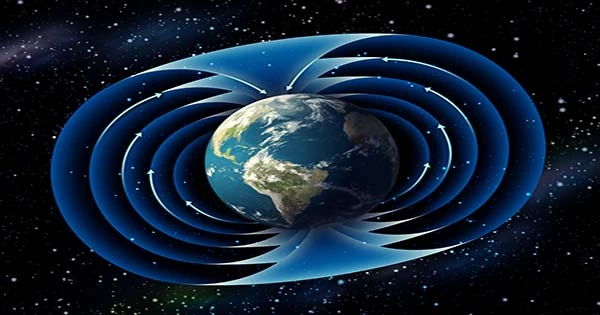According to a new research, fears that a localized weakening in the Earth’s magnetic field signals an impending reversal of the field’s direction are unfounded. The geomagnetic field will ultimately reverse direction, although local abnormalities like this are common and occur whether a transition is imminent or not. Certain rocks are magnetized in the direction of the Earth’s magnetic field when they are set down. This one finding has revolutionized geology, allowing us to better understand ancient continental motions. It also revealed that the magnetic field has abruptly switched directions several times over the planet’s history, causing the north and south magnetic poles to shift positions.
We don’t know why this happens, much less when it will happen next, but whenever something odd occurs in regard to the field, some people assume it’s a foreshadowing of the next flip. The heart of the recent kerfuffle, known as the South Atlantic Anomaly, isn’t unique, according to a report published in Proceedings of the National Academy of Sciences. Flips would happen significantly more frequently if they happened every time a part of the world had an exceptionally weak field.
A 10% decline in magnetic field strength during the previous 180 years might be a random fluctuation, but some are concerned that it is a warning sign. The finding that satellites can malfunction over the south Atlantic because the field there isn’t strong enough to defend against cosmic rays added to the alarm. Dr. Andreas Nilsson of Lund University, on the other hand, claims that we were just unaware of past iterations of the phenomenon. “We’ve mapped changes in the Earth’s magnetic field over the last 9,000 years, and anomalies like the one in the South Atlantic are likely periodic occurrences connected to comparable fluctuations in the Earth’s magnetic field strength,” Nilsson said in a statement.
Dips in field strength and local anomalies were common during the study period, and they tended to occur at the same time before reverting to the mean. A time period approximately 2,600 years ago appears to be a good fit for what is happening now. Nilsson and co-authors used evidence of field strength from all around the planet during that time period, including volcanic materials, sediment deposits, and clay pots burnt at 580 °C (1070 °F) or higher. All of them can record the magnetic field at the moment they cooled or solidified if they have enough magnetic components in their composition.
Nilsson’s team needed to build new modeling approaches to reconstruct field strength from the patchy data, despite the fact that some such records already existed. The authors offer one forecast, despite not being able to anticipate when the next flip will occur. “We expect that the South Atlantic Anomaly will probably vanish over the next 300 years based on parallels with the reproduced anomalies,” Nilsson added. However, satellite providers may be a little late.
The Earth’s magnetic field rotates every 200-300,000 years on average, so with it (probably) being 780,000 years, it’s absolutely possible, but the chances are stacked against it happening in anyone’s lifetime. We don’t know if previous flips caused any harm; there has been conjecture about increased exposure to cosmic radiation at a weak moment during the flip, but no one knows for sure. The idea that extinction rates grow during flips is debatable.
The threats to humans, on the other hand, are likely to be larger. It’s difficult to say exactly what would happen, apart from compasses suddenly pointing in the incorrect way, but it’s possible that the damage caused by solar storms to energy infrastructure would skyrocket during the flip. Stone tools, which were the closest thing humans had to technical infrastructure during the last flip, were probably far more resistant.
















